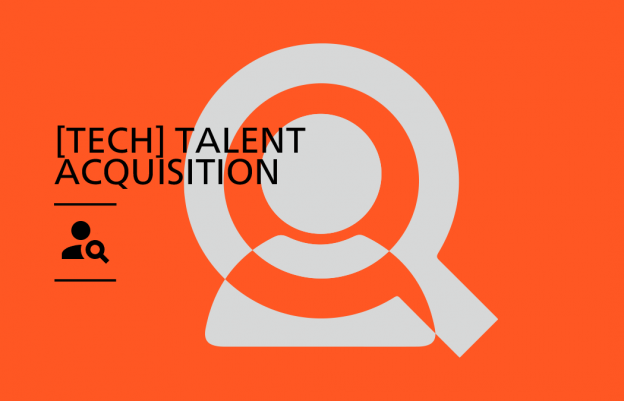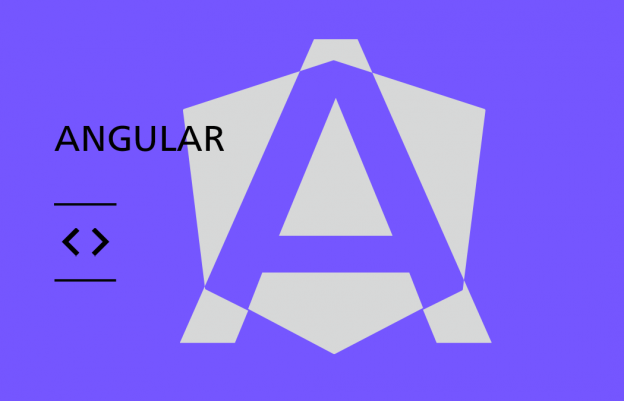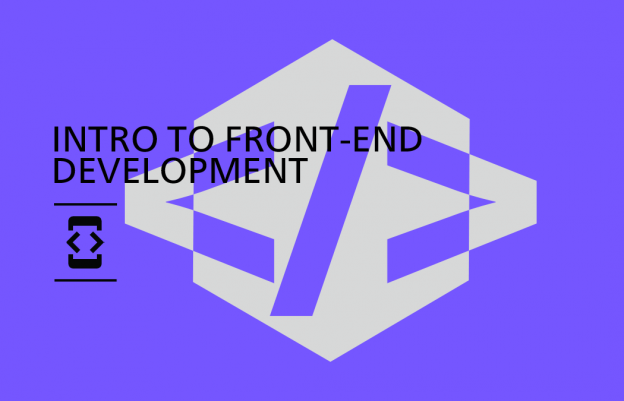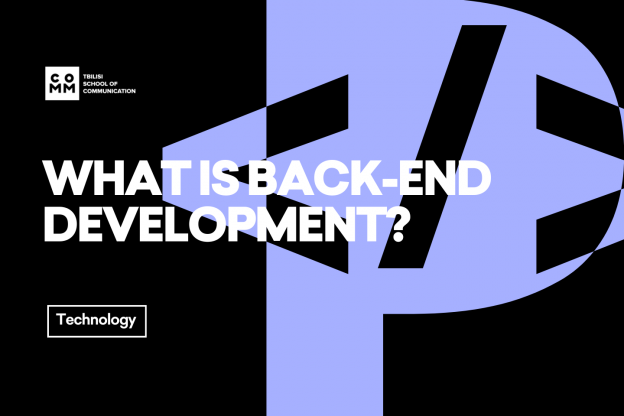
This course offers a fully practice-based learning experience, providing students with the opportunity to gain real-world project development experience. The course is structured in two main phases: In-depth study of HTML and CSS Mastering core JavaScript concepts and building small to medium-sized applications.
Students will benefit from mentorship by an experienced instructor with 6 years of Front-end Development experience, currently working as a Senior Front-end Developer at the American startup Rad. inc. At the course conclusion, participants will create an individual project using JavaScript, the most in-demand programming language. They will also undergo a mock interview with live coding, simulating real-world hiring processes.კურსის დასრულების შემდეგ შეგეძლება
დამატებითი უნარები: HTML, CSS, JavaScript, Bootstrap, Visual studio code.
-
Utilize HTML, CSS, and JavaScript technologies effectively
-
Build small to medium-sized websites
-
Develop websites using Bootstrap framework
-
Proficiently use Visual Studio Code
-
Implement your own ideas and create prototypes
-
Independently learn and apply new technologies and frameworks
სამ-პარ 20:00-23:00
ორშ-ხუთ 20:00-23:00
 TBC განვადება
TBC განვადება
 BOG განვადება
BOG განვადება
ვისთვის არის კურსი

Beginners
The course is intended for all people who want to learn web development from scratch and are looking for a relatively easy way to do it

UX/UI designers
The course is intended for web designers who need to understand the basics of web development in their daily work.

SEO specialists
For digital marketers who need to independently plan and execute website maintenance
პროგრამა მოიცავს
Alumni Club
Upon successful completion of the final exam, the graduate is automatically enrolled in the Alumni Club, and then gains access to exclusive events, content, and offers from our partner companies.
Work Based Learning
The course includes practice-based learning, including assignments/exercises and individual projects.
Bilingual Certification
Upon successful completion of the course, students will receive a bilingual certificate.
კურსდამთავრებულები
სილაბუსი
აარჩიე შენთვის სასურველი დრო
ლექტორები
გიორგი აფხაძე
Intro to Front-end Development
გიორგი აფხაძე
Intro to Front-end Development
გიორგი უკვე 5 წელია ვებ-დეველოპმენტის სფეროშია. ამჟამად მუშაობს ჩეხურ კომპანია DigiSoul-ში React დეველოპერად. წლების განმავლობაში მუშაობდა სხვადასხვა სახის მსხვილ პროექტებზე ისეთ უცხოურ თუ ქართულ კომპანიებთან, როგორიცაა STC Delta, DGA (Digital Goodies Art) და სხვა. მათ შორის ისეთ საქმიანობებზე, როგორიცაა Crypto Trading სისტემები, e-commerce, ERP, LMS და მენეჯმენტის სისტემები.
 Linkedin
Linkedin
ხშირად დასმული კითხვები კურსის შესახებ
Your search Digital Designer did not match any documents
ვერ მიიღე შენთვის საინტერესო ინფორმაცია?
ჩაეწერე უფასო კონსულტაციაზეშესაძლოა გაინტერესებდეს
რელევანტური რესურსები
იხილე სრულადFront-end vs Back-end - A Guide to Web Development
When you search for something on Google, you get several choices as a result. With each click, these results change appearance according to our wishes, and we receive a beautiful, functionally sound feedback. We know these results as websites, and their creation is known as Web development. The term web development sounds familiar because it is one of the most trendy skills you can acquire in the IT field.Web development is one of the most important parts of IT because it creates a bridge between the user and the provider. Moreover, through functionality, it helps us automate complex tasks. Front-end and Back-end are integral parts of web development. What are these parts? How do they differ from each other? How much does the functioning of a website depend on them? Does one of them stand higher than the other? If you're interested in the answers to these questions, you've come to the right place, because in this blog you'll learn about the importance and functions of Front-end and Back-end. What is Front-end? As the name suggests, Front-end is what the user sees, connects with, and experiences. It mainly includes those parts of websites and applications that are visible to the user. The person who works on this is known as a Front-end Developer. The job of a Front-end developer is to create designs using user interface and experience. The primary skills of a Front-end developer include knowledge of HTML, CSS, JavaScript, as well as frameworks such as Angular JS, Node.js, etc. Along with this, experience in version control systems such as GIT and GITHUB is important. A Front-end developer is an integral part of web development because they ensure the creation of the necessary structure for the work to be performed. What is Back-end? Back-end development resembles the backstage of a movie or show. Actions performed by the user are analyzed and sent back through codes written by the back-end. The person who develops this is known as a Back-end Developer. The main work of a Back-end Developer involves connecting all aspects to databases and the Front-end. The primary skills of a Back-end Developer include knowledge of languages such as C#, Python, Java, Ruby, etc. Back-end is very important because it gives purpose and functionality to the beauty of an application or website. Characteristics of Front-end Along with a wide range of functions, Front-end has many characteristics: Client-side rendering: It allows developers to render the entire website on the user's browser using JavaScript. Server-side rendering: It makes it possible to visualize sites directly in users' browsers based on changes requested by the users themselves. Optimization: Refined adjustment of HTML, CSS, and JavaScript ensures fast loading of sites for users. Characteristics of Back-end Like Front-end, Back-end is also equipped with many functions that are useful for developers: Databases: Stores data needed for the user. Website architecture: It involves understanding the goals needed to create an application. Scripting: Involves correct formatting of the construction. API: Application Programming Interface or API are tools that involve communication between technologies and provision of necessary data. Front-end Development Languages HTML: Hypertext Markup Language or known as HTML, is a markup language used in building web pages. The language contains elements that provide the basic layout of the website. Along with giving structure to websites, it also displays images or visuals. Its advantages are: ease of use, support for multiple browsers, and combination with other languages. Its disadvantages are: static nature, security, and huge pile of codes.CSS: Cascading Style Sheets or CSS resembles the interior design of a website. CSS is simple because the language more or less includes basic English. Its advantages include multiple browser support, simplicity, and speed. Its disadvantages include cross-browser bugs and it's also tiring for beginners.JavaScript: JavaScript is the most important and popular language of Front-end development. It provides flexibility and responsiveness to the website. Advantages include: simple nature, speed, and additional or extended functionality such as creating dialog boxes, forms, pop-up windows, etc. Disadvantages are: difficulty in debugging and browser support. However, JavaScript is also used in the back-end.Elm: Elm is a simple language used to create fast and continuous websites.SASS: SASS is another scripting language like CSS. SASS has unique features that give users a seamless experience. Advantages include: reusability and clear codes. Disadvantages include: finding problems and solving them.jQuery: jQuery is a JavaScript library that enhances HTML event handling and animations. It's very concise and reduces the number of lines of written code. Front-end Frameworks Vue.js: This is a framework built around JavaScript and is used to create compact web applications.AngularJS: It's a web framework built around JavaScript. It provides features for HTML templates and increases performance.React: This is a popular JavaScript framework that enhances user interface components and provides a dynamic nature to web applications. Back-end Development Languages Python: Python is a widely used back-end development language. Its advantages are: huge collection of libraries, easy-to-read codes, integrations, versatility, etc.PHP: This is another widely used language in back-end development. Its features include: security, platform compatibility, object-oriented programming features, and integration with databases.Java: This is widely used to create Android and desktop applications. Its features include: automatic memory allocation, portability, and one-time compilation.Ruby: Ruby is a general-purpose language that has features such as a large standard library, flexibility, scalability, etc. Back-end Frameworks Django: ეს არის მაღალი დონის ვებ ჩარჩო, რომელსაც გააჩნია ჩაშენებული დანამატები. ის საუკეთესოა ფართომასშტაბიანი, მონაცემზე ორიენტირებული, ინტერაქტიული ვებ აპლიკაციებისთვის. თუმცა, ის არ არის რეკომენდებული მცირე ზომის პროექტებისთვის.Flask: Flask არის მიკროჩარჩო, რომელიც დაფუძნებულია პითონის ენაზე. მას არ სჭირდება ბიბლიოთეკები ან ხელსაწყოები და, შესაბამისად, შესაფერისია მცირე პროექტებისთვის.Ruby on Rails: Ruby on Rails არის ვებ აპლიკაციის ჩარჩო, რომელიც დაწერილია Ruby ენაზე. იგი გამოიყენება მონაცემთა ცხრილის უნაკლო ფორმირებისა და მიგრაციის შემუშავებაში. მარტივი შედგენა და ტესტირება მისი დამატებითი უპირატესობაა.CakePHP: CakePHP არის პოპულარული ვებ ჩარჩო PHP-სთვის. იგი გამოიყენება როგორც მცირე, ისე დიდი აპლიკაციების შემუშავებაში, რადგან უფრო ადვილია კონფიგურაცია და უზრუნველყოფს სრულ უსაფრთხოებას. განსხვავება Front-end და Back-end Development-ს შორის Django: This is a high-level web framework that has built-in add-ons. It's best for large-scale, data-oriented, interactive web applications. However, it's not recommended for small-scale projects.Flask: Flask is a micro-framework based on the Python language. It doesn't need libraries or tools and, therefore, is suitable for small projects.Ruby on Rails: Ruby on Rails is a web application framework written in Ruby. It's used in developing flawless data table formation and migration. Simple compilation and testing is its additional advantage. CakePHP: CakePHP is a popular web framework for PHP. It's used in developing both small and large applications because it's easier to configure and provides complete security.Difference between Front-end and Back-end Development Front-end is the interactive part of a website or application. The graphical user interface (GUI) allows users to perform actions according to their wishes. Users can see and connect with the Front-end. Users cannot see the backstage of the website or application, i.e., the Back-end. It collects information from users, processes it, and ensures the functioning of the application.A Front-end developer works on layout, while a back-end developer's job is to achieve the functional stage.Front-end developers should have an idea about Back-end. Thus, its development is not just about beauty. Although back-end development mainly concerns logic, calculations, servers, APIs, and testing, collaboration and data exchange between front and back developers is very important. So, as you can see, web development is an interesting field in the technology sector. Front-end Development resembles the exterior of a house; paint, wall carvings, wall hangers, or everything a person can see and feel. Back-end resembles the electrical supply, building materials that you can't see, but are crucial for the house. These two things together give an application the best appearance and functionality. Learn About commschool Courses
Guide to Programming: Back-end Development
You probably know that software engineers always consider the front-end and back-end of their applications. But what does this specifically mean? If you're interested in the technical and visual differences between them, you've come to the right place, because in this blog you'll learn about web back-end architecture.Front-end is code that is executed for the client side. This code (usually HTML, CSS, and JavaScript) works in the user's browser and creates the user interface. Back-end is code that runs on the server, which receives requests from clients and contains the logic to send them relevant data. The back-end also contains a database that permanently stores all the application's data. This blog focuses on the hardware and software on the server side that makes all this possible. What types of clients exist in the BACK-END? Everything that sends requests to the back-end can be considered a client. They are often browsers that request HTML and JavaScript code, which they use for the end user to perceive the website. However, there are many different types of clients: it could be a mobile application, an application running on another server, or even a smart device connected to the web. What is the back-end? The back-end is all the technology needed to process an incoming request, generate a response, and send it to the client. This usually includes three main parts: Server. This is a computer that receives requests. Application. This is an application running on the server that listens to requests, retrieves information from the database, and sends a response. Database. Databases are used to organize and maintain data. What is a server? A server is simply a computer that listens for incoming requests. Although there are machines created and optimized for this specific purpose, any computer connected to a network can act as a server. In fact, you often use your own computer as a server when developing applications. What are the main functions of an application? The server runs an application that contains logic on how to respond to various requests based on HTTP and Uniform Resource Identifier (URI). The pair of HTTP and URI is called a route, and matching them based on the request is called routing.Some of the handler's functions will be middleware. In this context, middleware is any code that is executed by the server between receiving a request and sending a response. These middleware functions may modify the request object, query the database, or otherwise process the incoming request. Middleware functions typically end by passing control to the next function, not by sending a response. Eventually, a terminal function will be activated that completes the request-response cycle by sending an HTTP response to the client. What types of responses can the server send? The data that the server sends back can be of different types. For example, the server might use an HTML file, send data in JSON format, or might only send an HTTP status code. You've probably seen the status code "404 - Not Found"; which appears when you try to navigate to a URI that doesn't exist. But there are many more status codes that indicate what happened when the server received the request. What is a database and why do we need to use them? Databases are typically used for the back-end of web applications. These databases provide an interface to permanently store data in memory. Storing data in a database reduces the load on the server's CPU main memory and allows data recovery in case of server crash or power loss. What is a Web API? An API is a collection of clearly defined methods of communication between different software components. More specifically, it's an interface created by the back-end. A web API is defined by the types of requests it can handle. This includes the defined routes and the types of responses that clients receive. Other principles of the BACK-END request-response cycle: The server typically can't give responses without a request; Every request needs a response, even if it's just a 404 status code indicating that the content couldn't be found; The server should not send more than one response per request. This will cause errors in the code; Request composition Ana is shopping on SuperCoolShop.com. She clicks on the picture of her smartphone case and a GET offer is sent to the following link: http://www.SuperCoolShop.com/products/66432. Where GET describes the type of request. The URI (Uniform Resource Identifier) /products/66432 indicates that the client is looking for additional information about the product and this product has ID 66432.Ana's request goes across the internet to one of SuperCoolShop's servers. This is one of the slowest steps in the whole process because the request can't go faster than the speed of light. For this reason, large websites that have users all over the world have many different servers and direct the user's request to the closest server.The server, which is actively listening to all user requests, receives Ana's request.Event "listeners" that receive this request (HTTP verb: GET and URI: /products/66432) are activated. The code that runs on the server between the request and response is called middleware.While processing the request, the server code activates a database request to get more information about the specific product. The database contains all other information Ana wants to know about this smartphone case: product name, product price, several reviews.The database request is executed and the database sends the requested data to the server. It's worth noting that database requests are one of the slowest steps in this process. Reading and writing from static memory is quite slow and also, the database might be on a different device than the original server.The server receives the necessary data from the database and is now ready to build and send a response to the client. This part of the response has all the information the browser needs to show Ana more details about the phone case. The response header contains HTTP status code 200, which indicates that the request was successful.The response spreads across the internet, to Ana's computer. Ana's browser receives the response and uses this information to create the view that the client finally sees.https://www.youtube.com/watch?v=7fsXgyIlwKUSo, if after reading this blog you're convinced that Back-end Development is an interesting and necessary field, start learning from scratch, join us on the Introduction to Programming course! Join Us
What You Should Know About the Data Science Course
If you're interested in working with data and want to learn new tools, this blog is for you. Meet Otar Samadashvili, a commschool graduate, who will share his impressions about the data science program. Otar became interested in data science while studying mathematics and statistics courses at university. He was always attracted to solving complex problems and drawing conclusions based on data. Given his interests and skills, he decided to start studying data science and develop his career in this direction. Otar had a basic knowledge of Python, which was a good starting point for this field. His goal was to transform the theoretical knowledge gained at the university into practical skills, for which he decided to take the Commschool data science course. "I chose Commschool because of their practical approach, the opportunity to work on interesting projects, and the experienced lecturer. Additionally, the syllabus was well-organized and covered many interesting topics. It was also pleasant to meet students with the same interests. In my opinion, communicating and discussing with them live during lectures was quite productive." Data Science: What Does the Course Cover? As Otar notes, he expected it to be a quite intensive and laborious course, and therefore had high expectations. Despite this, the program still exceeded his expectations. For him, the most valuable aspects were practical projects and working with real data. Otar was able to develop both technical and soft skills. The main challenge for him was absorbing a large amount of information in a short time. However, with intensive practice and study, he easily overcame this difficulty. As a result, he is already using the skills and paradigms acquired in the course at work. Data Science Course 32 lectures | 96 hours | 16 weeks Learn more "In my opinion, the most important thing gained from the course during the final project was the soft skills, as I could ask the right questions, conduct correct experiments, and develop a proper model evaluation system. All of this simplifies the technical part as well, because executing a well-designed plan is much easier." Within the data science course, you will learn to process big data using Python, build and apply machine learning algorithms and adapt them to business models, and use artificial intelligence (AI) and large language models (LLM). The program includes practice-based learning, which will give you the opportunity to gain practical experience along with theoretical knowledge. The final individual project is the most interesting part of the course, which represents a kind of summary of the material studied throughout the program. Skills Needed for a Data Scientist According to Otar, technical skills such as mathematics, statistics, and programming are essential for a data scientist. In his opinion, this technical part is well covered during the course, as they were able to learn relatively complex machine learning topics more easily and comprehensively. In addition to technical skills, it's also necessary to develop soft skills in this field. For example, effective communication, analytical thinking, and asking the right questions. Otar notes that many courses don't cover such issues, so it was pleasant that he had the opportunity to develop and improve these skills at commschool. "In my opinion, learning data science and continuing a career in this direction is the right choice for many people." For those interested in data science, Otar advises starting with learning the basics of programming. Work on practical projects in parallel and, most importantly, don't be afraid of challenges and be ready for intensive learning. It's also important to keep an eye on current events in this direction, as the data field is developing very rapidly. After completing the course, Otar continues self-development, learning, and working on personal projects. If you're ready for new adventures, then familiarize yourself with the course syllabus and join us at Commschool! Learn More About Course
 დამწყები
დამწყები  Live-online
Live-online

 საშუალო
საშუალო 










